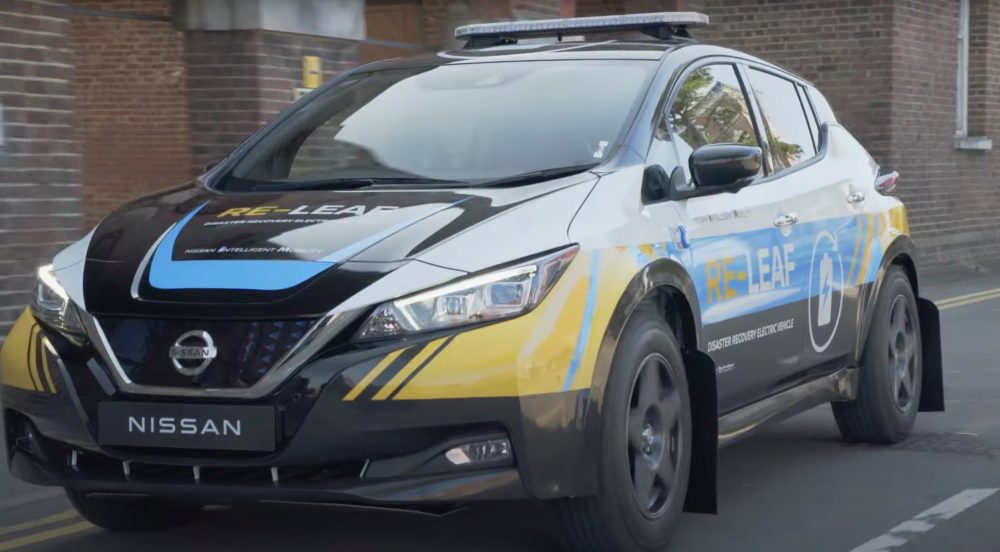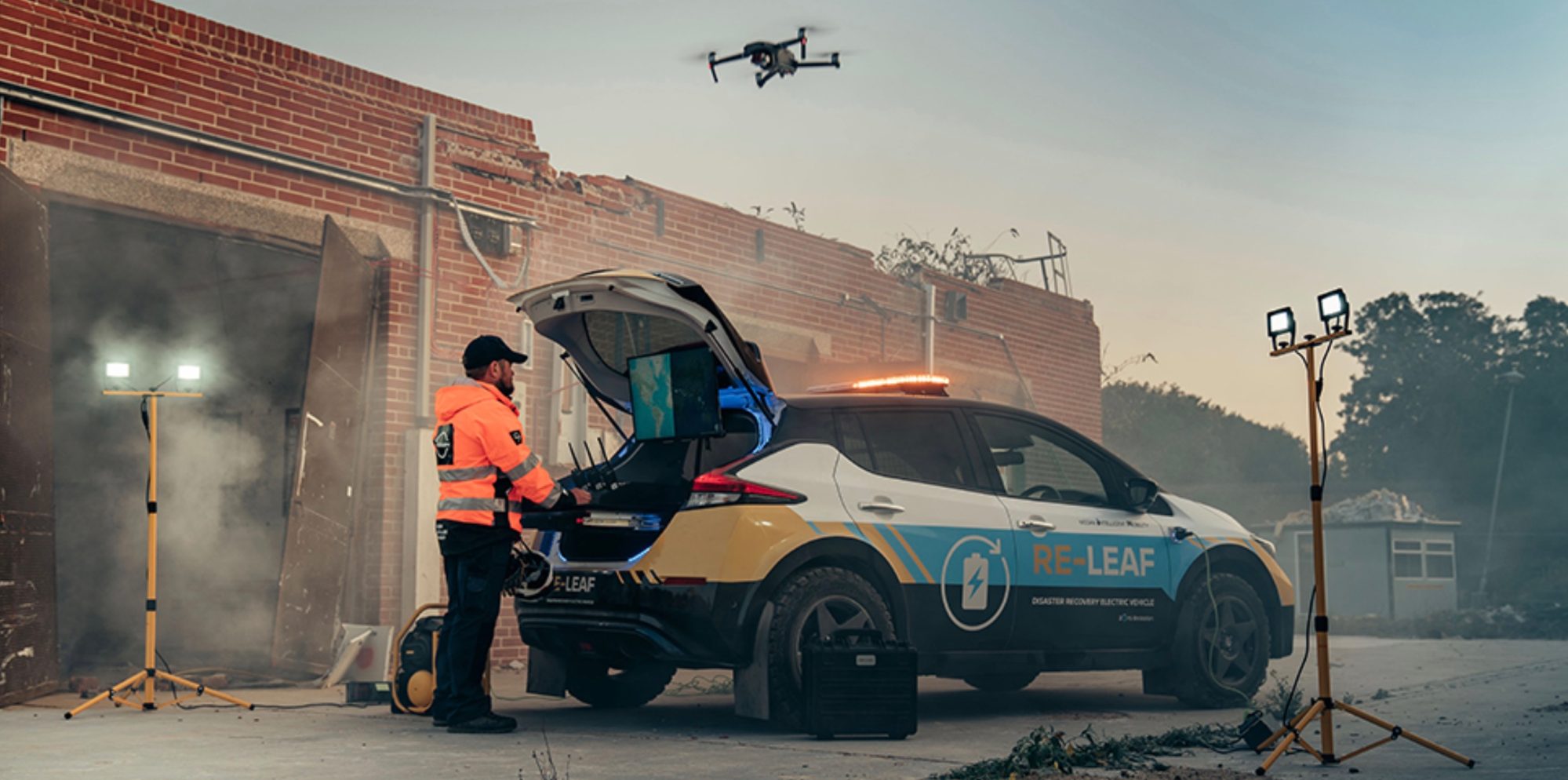Nissan has modified its electric bestseller, the LEAF, to become the ultimate emergency vehicle – the RE-LEAF. This prototype has been designed to function as a mobile power supply after a natural disaster, an exciting application that could be exploited in the future thanks to V2X technology (bidirectional charging).

The Nissan LEAF was one of the first models on the market to incorporate such technology. However, at the moment, it is limited to those markets where two-way chargers are already available. This type of solution has enormous potential for the future, as it will allow electric cars to be used as domestic batteries capable of strengthening and stabilizing the electricity grid.
When bi-directional charging is standardized, electric cars will even be able to maintain a household’s power supply for a time during a blackout. The RE-LEAF prototype is nothing more than an extreme example of this latest application, providing backup power after a massive power outage.
“The Nissan RE-LEAF is a 100% electric emergency vehicle concept, designed to serve as a mobile power source after a natural disaster or external weather event.” Compared to a conventional LEAF, this concept car adds a raised suspension, specific wheels, and off-road tires.”
Another exciting addition is the control center integrated into the trunk, which includes a large screen (we understand for telecommunications). “The RE-LEAF can reach the epicenter of the disaster and provide emergency power to aid in the recovery process. The integrated power management system can power medical, communications, lighting, and other life support equipment.”
Although the Nissan RE-LEAF is nothing more than a prototype with no signs of going into production, it is still a very realistic preview of the emergency vehicles of the future, which will be more connected, more environmentally friendly, and allow to provide better service thanks to its ability to function as an energy storage system.

